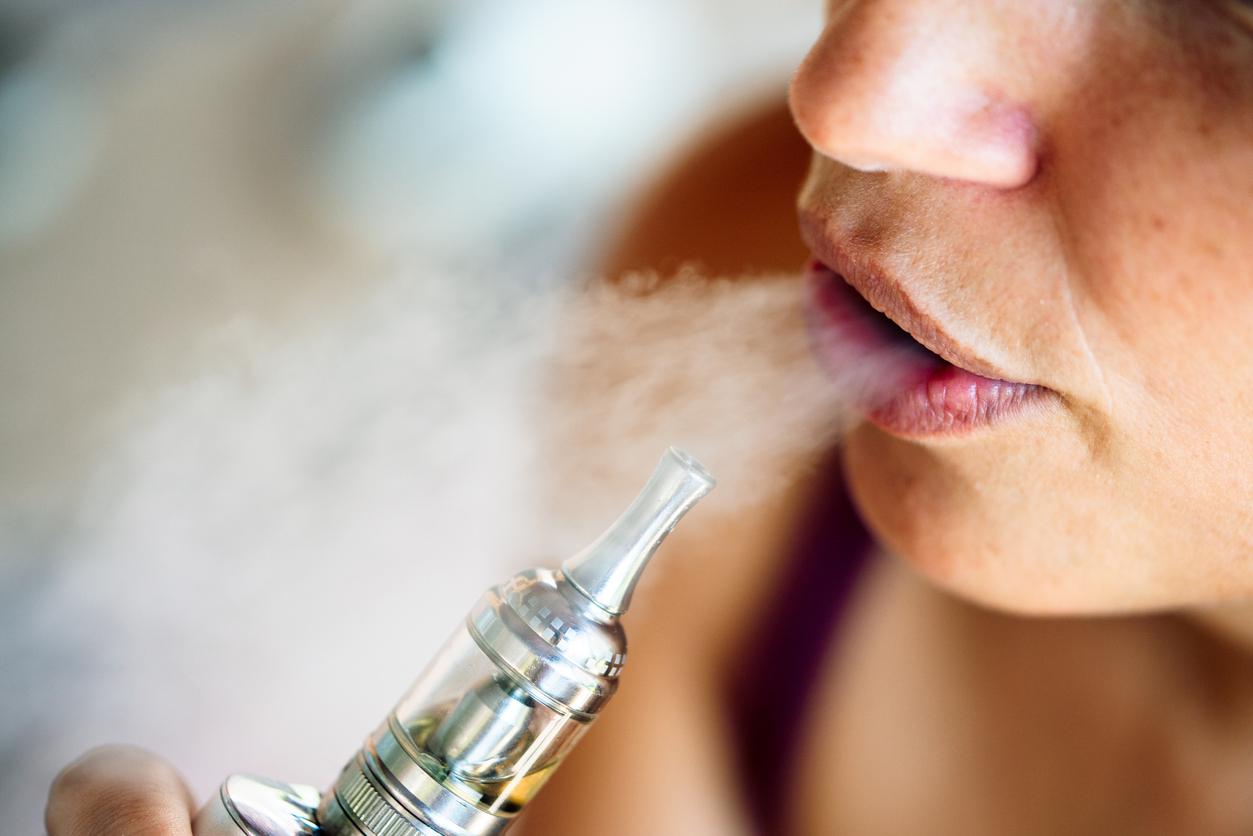Exposure to e-cigarette vapors, which contain nicotine particles and other toxic substances, has negative effects on the bronchial tubes of young adults.

- “Passive” vaping, which is the act of inhaling the vapors of electronic cigarettes involuntarily, increases the risk of suffering from respiratory problems in young adults.
- The HSCP recently recommended that healthcare professionals not offer patients the use of electronic cigarettes to quit smoking.
We know: passive smoking is not without consequences. And for good reason, it causes 3,000 to 5,000 deaths each year, according to the Ministry of Health. But inhaling, involuntarily, a puff released by one or more electronic cigarette users also presents a real health risk. According to a study published in the journal BMJ Thorax this January 10“passive” vaping is particularly harmful to the bronchial tubes of young adults.
Little information on the effects of “passive” vaping on health
To reach this conclusion, researchers from the University of Southern California, Los Angeles (in the United States), started from an observation. “Little is currently known about the health effects of nicotine exposure from vaping,” they noted. They then wanted to know if “passive” vaping was associated with respiratory problems in young adults.
To study the impact of this exposure to e-cigarette vapors on respiratory health, they analyzed research called the “Southern California Children Health Study”. The latter was conducted among 2,097 young adults from 2014 to 2019. Each year, participants were asked to provide information on their respiratory health, their exposure to tobacco smoke, cannabis and electronic cigarette vapors.
A link between “passive” vaping and respiratory problems
According to the study authors, the prevalence of “passive” vaping increased from 11.7% to 15.6% between 2014 and 2019. “The prevalence of wheezing, bronchial lesions and shortness of breath increased from 12.3% to 14.9%, from 19.4% to 26% and from 16.5% to 18.1%, respectively, during the study period”, can we read in the results. According to the scientists, young adults who had been exposed to e-cigarette vapors were more likely to suffer from respiratory problems than participants who had not been exposed.
“If this is a causal link, reducing exposure to e-cigarette vapors in the home would reduce the occurrence of respiratory symptoms and provide a compelling rationale for regulating the use of e-cigarettes. e-cigarettes in public places”, concluded the researchers.
.
















